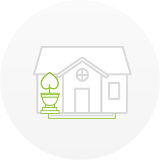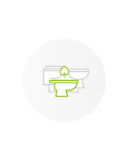
February, 2023. We should be in the midst of summer, slapping on sunscreen at the beach and floundering around in the water. Instead, it's been raining non-stop. We've had floods and three state of emergency declarations in the space of two weeks. The Hawke's Bay Regional Council has put out a statement saying "the wastewater system has been overloaded by hours of rain and intermittent power outages. In short, it's not coping". They're asking people to conserve water - no showers, no baths, no flushing toilets. Gisborne, Palmerston North, Taupo and Tararua District Councils are doing the same.
Rain is beating down windows. Wind is knocking things around, bending trees. Lights are flickering. The possibility of becoming a victim of this natural disaster is becoming hauntingly nigh... And, even if you are lucky enough to avoid utter flooding, what happens if you lose access to the services you have become so accustomed to? No power? No water? You could probably handle some time without a shower, but what happens if your toilet becomes unusable? Most people have come to rely on the ol' flushing toilet so much that they've never even considered the possibility of losing this luxury. What would you actually do? Dig holes in the garden?!
As we know, in a natural disaster, preparation is key. And in times of strife, an emergency toilet quickly becomes a necessity.
In the event of a flood, not only can flushing toilets fail to flush, but they can actually back-flood! Wastewater systems can be damaged by floodwaters and power outages. Water supply can be cut off and water sources can be contaminated. Septic tanks can clog, back-up, overflow, float, become displaced, leach waste into the environment and become a health hazard. With your regular flushing toilet out of action, a waterless toilet becomes the emergency toilet you need.
Waterless toilets come in a range of options. Some more suitable for emergency use than others. A popular option in New Zealand is a waterless composting toilet. It's true, composting toilets are generally viewed as a solution for rural applications. But, the reality is - natural disasters affect both rural and urban areas. In fact, urban areas - perhaps even more so, as such areas tend to have no redundancy systems in place. Not only are urbanites used to having creature comforts, but they're used to quick repairs, too - seldom having to forego a service for long. Unfortunately, in events of serious damage, repairs can take a great deal of time.
The optimum choice for carrying you and your family through and emergency is a fully self-contained composting toilet. Such systems are compact and easy to install, while remaining a cost-effective investment.
See product as example:
Composting toilets require no water, allowing comfortable toileting in times of water scarcity. They also reduce stress on waste management facilities as they are a safe and sanitary waste disposal solution in themselves - providing the means to dispose of waste by conventional rubbish road-side pick-up or by composting in the backyard. The use of composting toilets has been proven effective globally in times of disaster.
Additionally, composting toilets are much safer for the environment than sewer mains or septic systems in flood scenarios. Outputs from infrastructural waste management systems can wash out into the environment, contaminating waterways and resulting in the "no swimming" notices we're all too familiar with. In rural situations with onsite wastewater, saturated grounds limit safe disposal from septic tanks into dispersal fields. In urban situations, stormwater and wastewater systems can be overloaded or damaged. Composting toilets, on the other hand, release no wastewater into the environment - preventing water contamination.
Not only are composting toilets resilient to floods, but they're also earthquake resistant. They seldom have hard casing that can crack and can easily be repositioned post-tumble.
The need for emergency toileting is not a new issue for WCTNZ®. We want people to be prepared in case disaster strikes. Accommodate your family - let them poo in comfort.
If you're living with a composting toilet as your main toilet, you'll be happy to know that composting toilets are greatly flood resistant. The composting process is not interrupted by water, and composting toilets are easily recoverable if exposed to flooding. To learn how to recover your composting toilet post-flood read Compost Toilet Recovery Post-flood.
Need help choosing a system? Call WCTNZ® on 0800 022 027 for free advice on system specification and setup. Advanced design consultancy services are also available.
WCTNZ® | Waterless Composting Toilets NZ Limited | Copyright 2023 ©


















